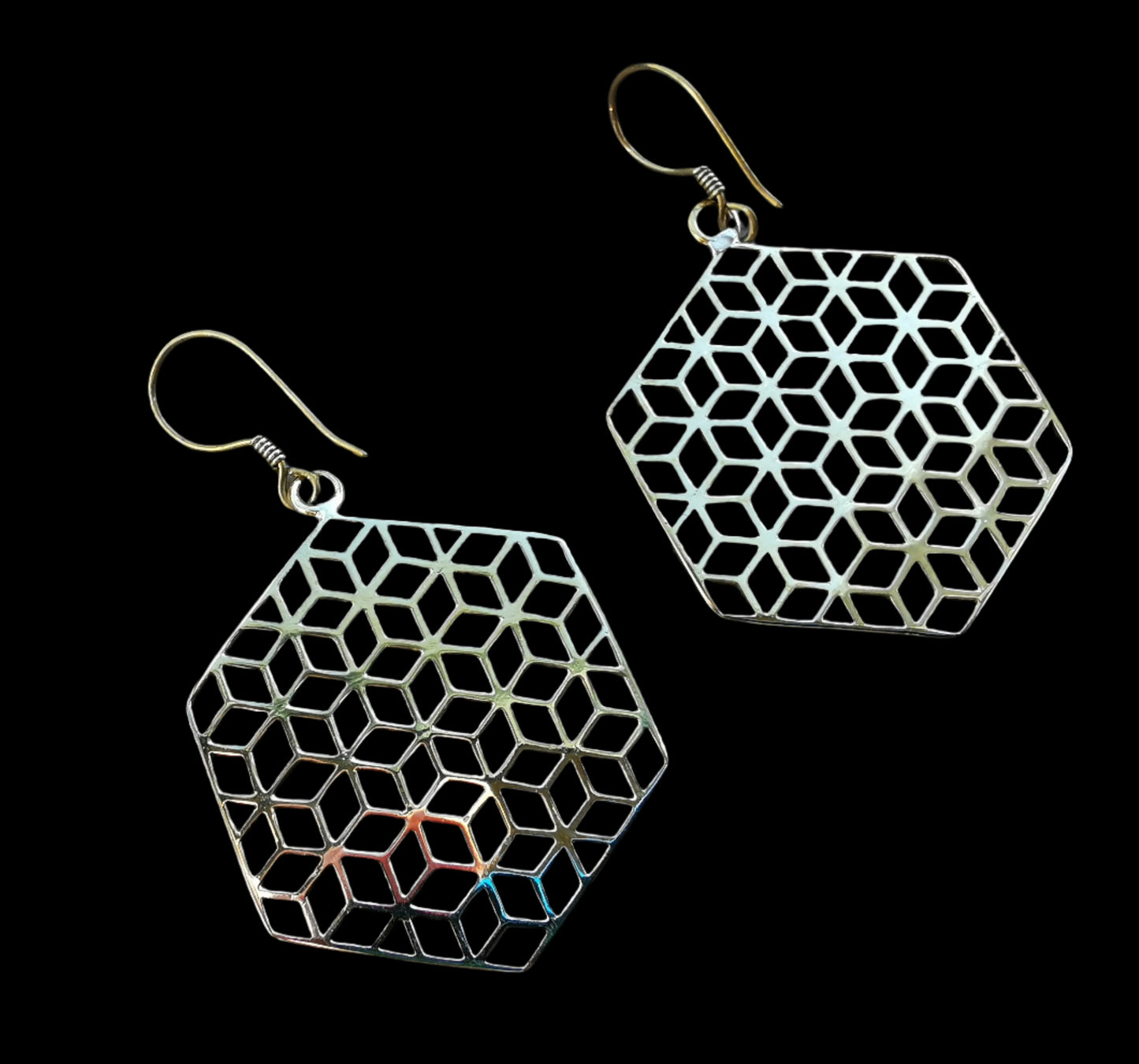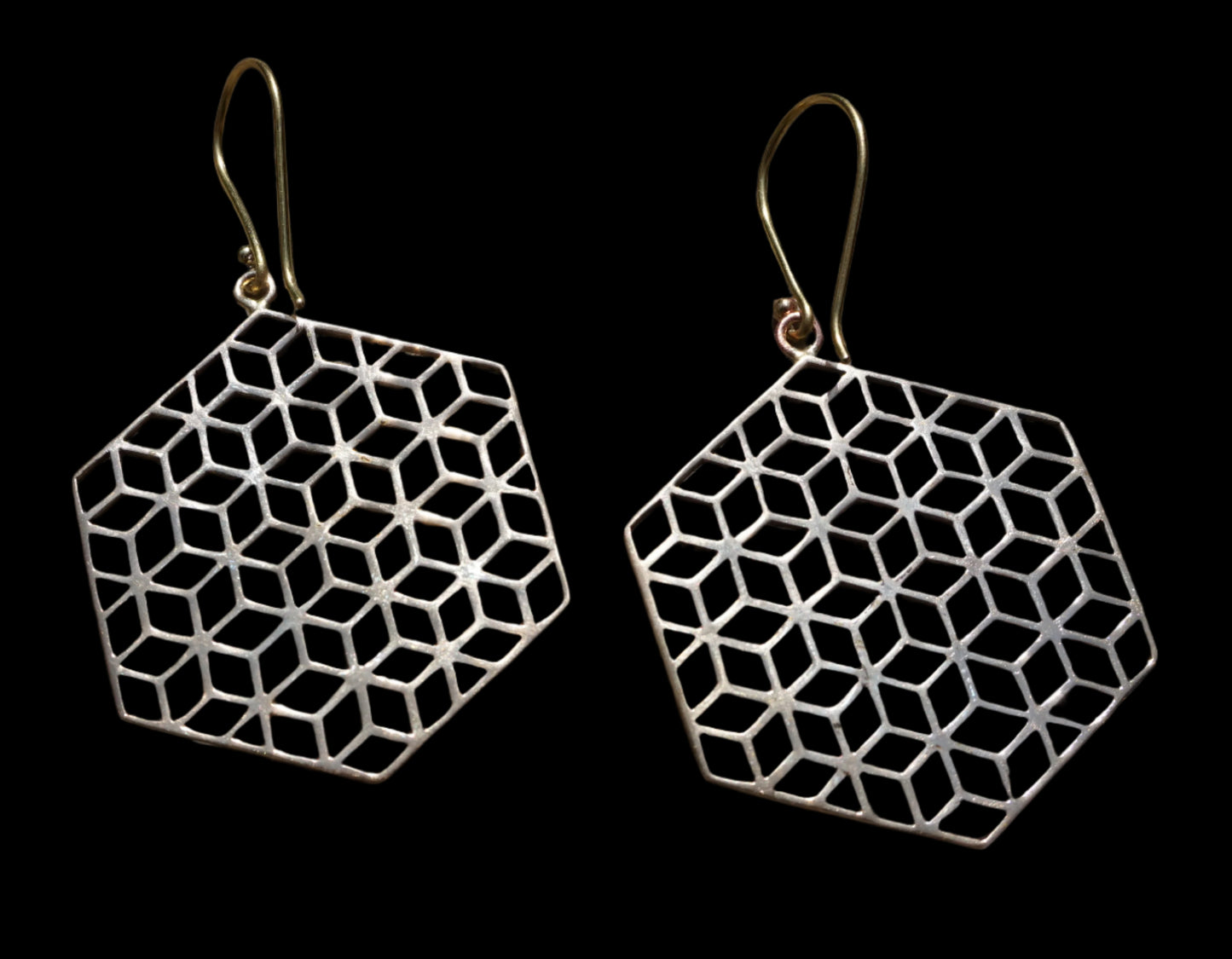Portal Glastonbury
Ref.ER0001
Ref.ER0001
Couldn't load pickup availability
The beehive pattern, characterized by a repeating hexagonal grid reminiscent of a honeybee’s honeycomb, carries profound symbolic significance rooted in its geometric efficiency and its reflection of natural and social principles. Its meaning centers on community, cooperation, productivity, and harmony, embodying universal patterns in nature, human society, and philosophical thought.
Symbolic Significance
At its core, the beehive pattern symbolizes community and cooperation. The hexagon, the most efficient shape for tiling a plane (minimizing gaps and maximizing space), mirrors the collaborative structure of a bee colony, where each bee contributes to the collective good. This represents the strength of interconnected individuals working together, as seen in human societies, teams, or ecosystems, emphasizing unity and mutual reliance for survival and success.
Productivity and industry are key themes. Bees’ tireless work to build and fill the honeycomb with honey symbolizes diligence, resourcefulness, and the rewards of sustained effort. The beehive pattern evokes the idea that collective labor transforms raw materials—pollen, nectar—into something valuable, paralleling human creativity, innovation, and the building of thriving communities or projects.
Harmony and balance shine through the pattern’s geometric perfection. The hexagon’s equal sides and angles create a stable, symmetrical structure, symbolizing equilibrium in nature and society. This reflects the balance between individual roles and collective goals, suggesting that personal contributions align with a greater purpose, fostering stability and resilience.
The beehive pattern also represents fertility and abundance. Honeycombs store honey, a symbol of sweetness and sustenance, reflecting nature’s capacity to provide through cyclical processes like pollination. This evokes prosperity, not just materially but emotionally and intellectually, as collaborative efforts yield rich outcomes.
Spiritual and Philosophical Significance
Spiritually, the beehive pattern serves as a meditative focus, its repeating hexagons guiding the mind toward unity and purpose. Contemplating its form can symbolize aligning one’s efforts with a larger whole—family, community, or personal values—fostering a sense of belonging and inner peace. It encourages embracing one’s role in life’s interconnected web, trusting that small actions contribute to meaningful results.
Philosophically, the pattern challenges individualistic thinking. Its efficiency and collective design suggest that true strength lies in cooperation, not isolation, promoting a holistic worldview that values interdependence. The beehive pattern symbolizes the synthesis of effort and outcome, urging reflection on how personal work fits into broader systems, from local communities to global networks.
The pattern’s cyclical nature, tied to bees’ seasonal labor, evokes renewal and continuity. It reflects life’s rhythms—work, rest, regeneration—suggesting that productivity thrives within balanced cycles, encouraging patience and trust in natural processes.
Cultural Contexts
Ancient Traditions: In cultures like ancient Egypt, honey and beehives symbolized wealth and sustenance, with hexagonal patterns in art reflecting order and fertility. Greek philosophers, like Aristotle, admired bees’ social structure, seeing it as a model for human organization.
Freemasonry: The beehive is a Masonic symbol of industry, cooperation, and community, with the hexagonal pattern representing the collective effort needed for societal progress.
Modern Design: The beehive pattern appears in architecture (e.g., honeycomb-inspired buildings), textiles, and art, symbolizing efficiency and sustainability, as seen in biomimetic designs mimicking nature’s solutions.
Environmental Awareness: In contemporary contexts, the pattern evokes ecological balance, highlighting bees’ role in pollination and the fragility of ecosystems, symbolizing the need for collective action to protect nature.
The beehive pattern’s symbolic significance weaves together community, productivity, harmony, and abundance. It embodies the power of cooperative effort, the balance of individual and collective roles, and the fertility of cyclical processes, inviting reflection on one’s contribution to life’s interconnected, productive web.




